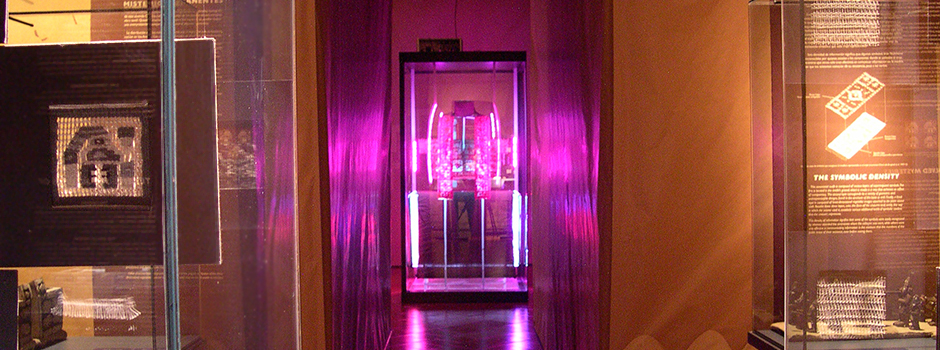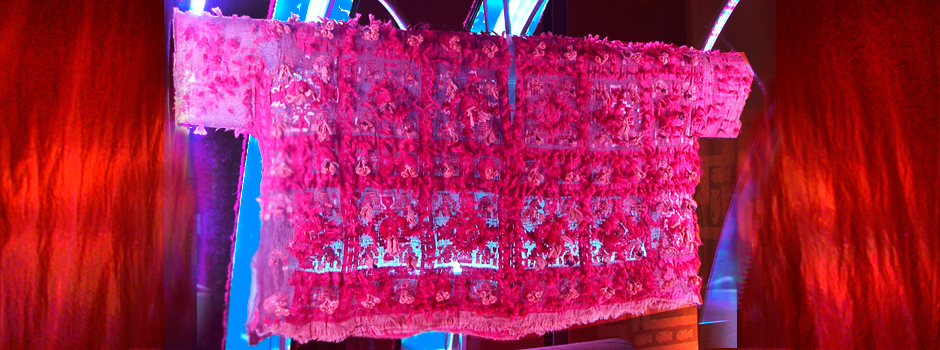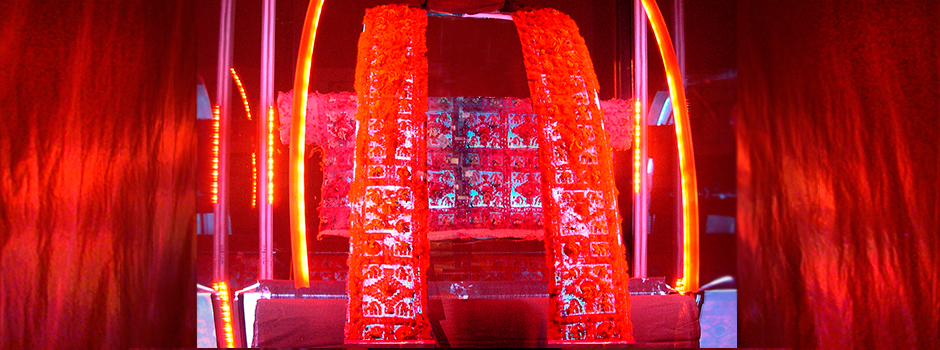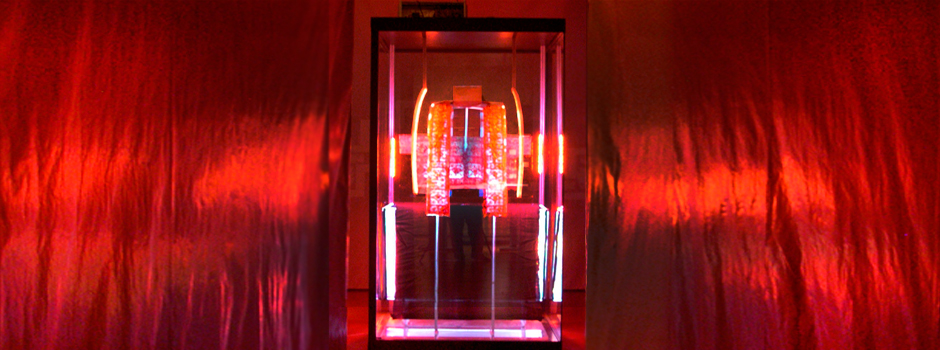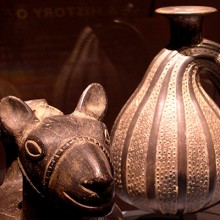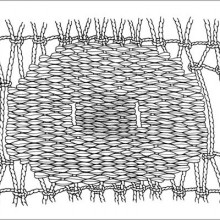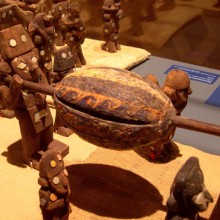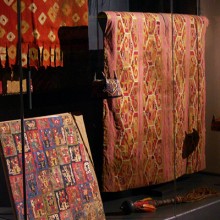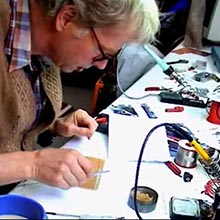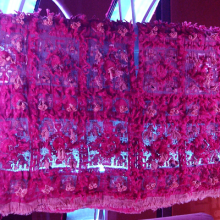Chimu, Labyrinths of a sacred costume
Presentation
The exhibit centered on a key item in the Museum’s textile collection: a ceremonial costume composed of a turban, a tunic or shirt, and a breechcloth, all made with the same materials, textile techniques and iconographic compositions, woven in fine gauze with fringes and three-dimensional plant motifs. The costume belonged to a powerful dignitary of the Chimú kingdom. Its symbolic function was related to the fertility of the desert environment in which this northern Peruvian coastal culture lived. The exhibit was designed as a maze of paper walls that imitated the high walls and long corridors of the palaces of Chan Chan, the capital of the Chimú kingdom. At the entry to the maze there was an area with information about the Chimú culture, and continued with other displays that explored in detail the textile technical aspects and the meanings of the iconography represented in this treasure of pre-Hispanic Andean textile-making.
The great quantity of information that we gathered regarding this sacred costume has revealed information of great utility in uncovering cultural and historical interpretations, as well as for the care and exhibition of textiles. The actual exhibit is based on these investigations and how these experiences have become part of the history of our institution.




































